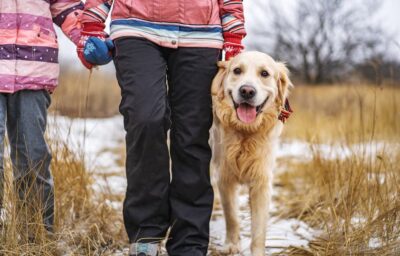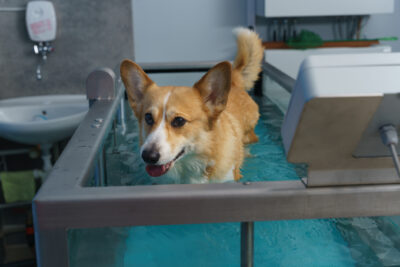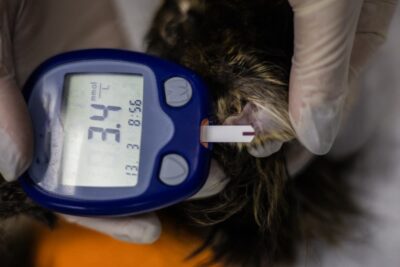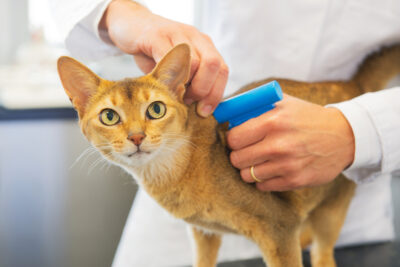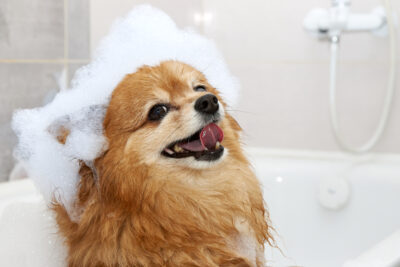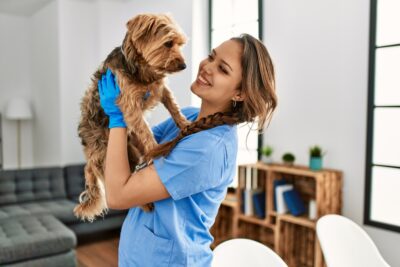How to Get Plaque Off Dog Teeth
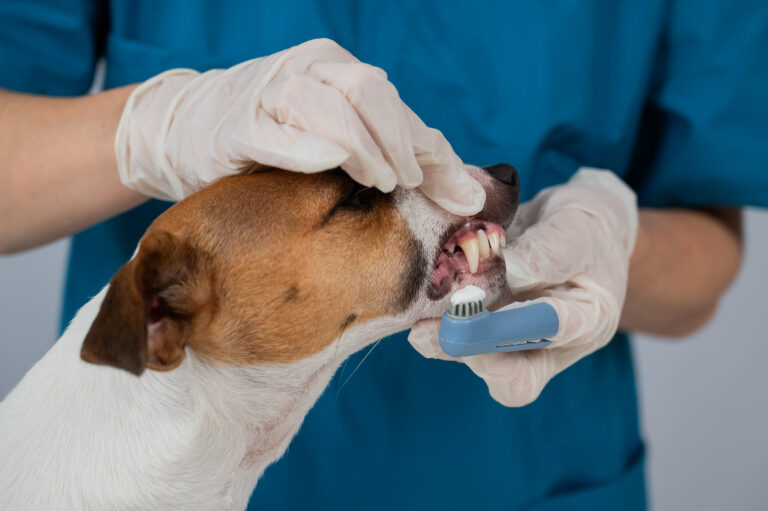
You know that sticky, filmy feeling on your teeth when you skip brushing? That’s plaque. And it’s not just a human problem — dogs get plaque too. If it isn’t regularly cleaned away, it may lead to serious oral health issues for your pup.
Dr. Catriona Love, a veterinarian at the Heart of Chelsea Veterinary Group, in Seattle, Washington, shares her tips with pet parents about how to get plaque off dog teeth — and make sure your dog’s pearly whites stay in the best possible condition.
Dog Plaque Removal: Why It’s Important
So, what exactly is plaque? Dr. Love describes it as a “biofilm of bacteria and saliva and food” that congeals together and binds to the surface of teeth. You can’t actually see plaque on your dog’s teeth, although your dog may feel its filmy layer.
If plaque isn’t cleaned off, it can turn into tartar — also known as calculus.
“I think of tartar as the more severe version of plaque that you can’t wipe away,” says Dr. Love. “So it sits there, and then you have all this bacteria that’s building up under the gum line.”
Dental tartar in dogs can lead to all kinds of dental issues, including gingivitis, a mild form of gum disease defined by inflamed gums. Gingivitis, in turn, can lead to more serious issues like periodontal disease, or periodontitis, a more advanced form of gum disease. So, dog plaque removal can be one of the most important tasks for pet parents to help keep their dogs healthy.
“Plaque is the one thing that you actually can remove at home and prevent it from turning into tartar, which leads to progressive periodontitis,” says Dr. Love.
How to Get Plaque Off Dog Teeth
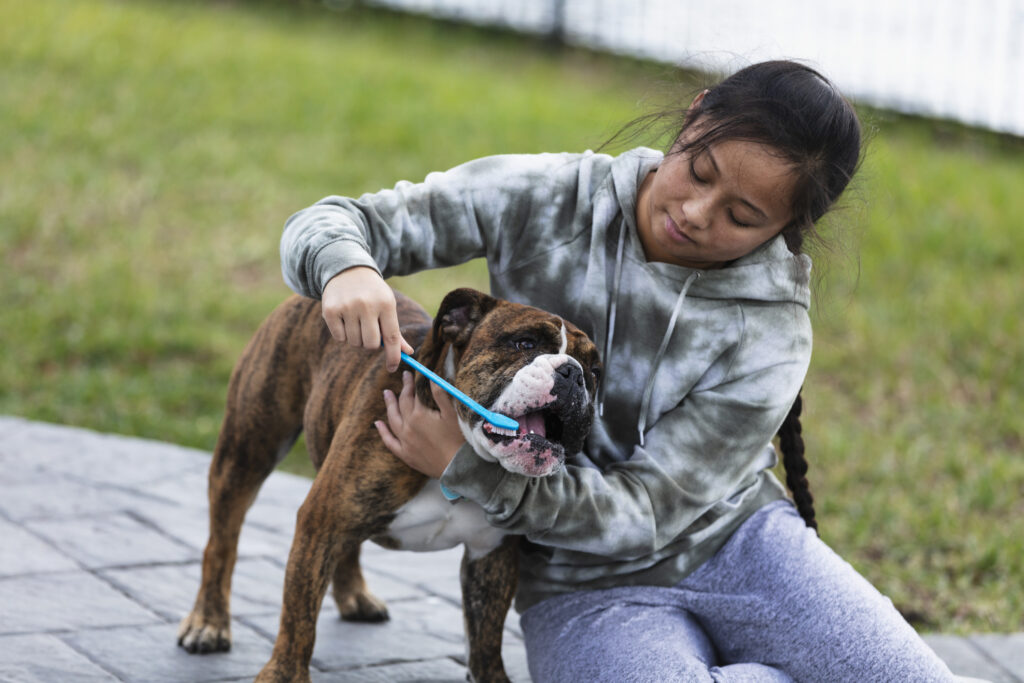
Here are five ways to get plaque off dog teeth:
Brushing
Possibly the best plaque remover for dogs is regular teeth brushing.
Dr. Love recommends getting into the habit of brushing your dog’s teeth “at least every 48 hours, but ideally every 24 hours” since tartar can form within 72 hours.
“You really have to be brushing at least every two days to actually make sure you’re preventing disease,” she says.
It’s also important to start as early as possible — ideally in the puppy stage, says Dr. Love. That way, your dog has time to get used to brushing — and you have time to learn how to properly brush.
A common mistake Dr. Love sees pet parents make is starting to brush their dog’s teeth only after gingivitis or periodontal disease has set in.
“The gums can be sore, so when you go to brush, they really don’t like it because you’re brushing a painful mouth,” says Dr. Love. “So the best way to start is when the mouth is really, really healthy because they’re not going to have any pain associated with it. And you just start really slow.”
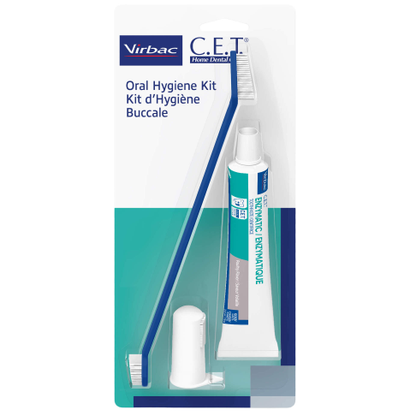
Dental Wipes or Cleansers
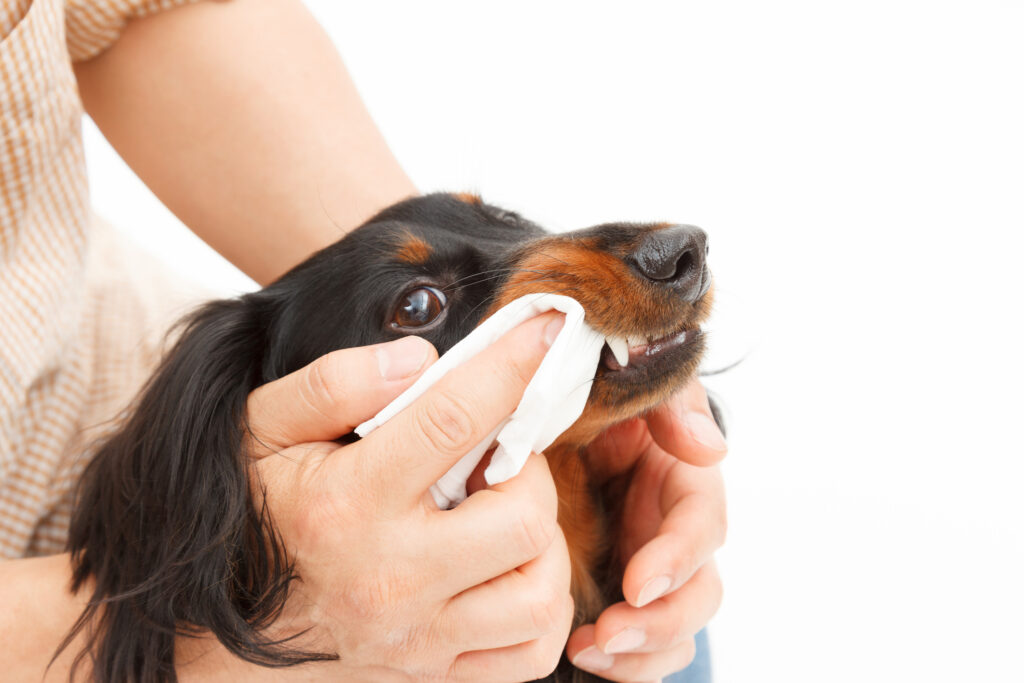
Another dog plaque remover method is using dental wipes or cleansers.
“The dental wipes, in particular, is something physically brushing against the mouth, so that probably has a little bit more success than a cleanser,” says Dr. Love. “But some animals really just don’t want their mouths touched, no matter what you do, which makes it a lot harder.”
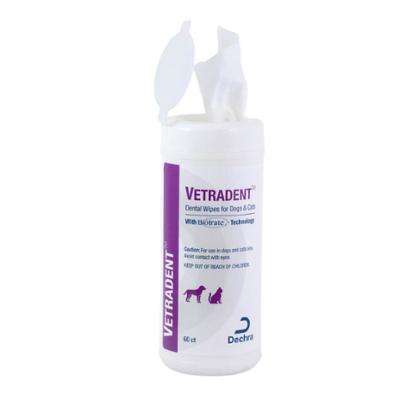
Dental Chews or Treats
When it comes to other products like chew toys and treats that purportedly remove plaque, Dr. Love recommends looking for products recommended by the Veterinary Oral Health Council, or VOHC.
“[The VOHC] reviews products and figures out if they are actually useful or not,” Dr. Love says.
Avoid chew toys that are “too hard,” Dr. Love adds, such as elk antlers or yak cheese.
“They can counteract the benefits, because you actually can break teeth or you can break down enamel, which causes further damage to the outside of the tooth,” Dr. Love says.
“We would recommend softer chews, things that you should be able to indent with your thumb a little bit,” Dr. Love says. “I really like bully sticks and things that are cartilage-based that start to soften as they chew.”


Dental Diet
Another way to keep the plaque away is to feed your dog a dental diet.
“[Dental diets] have been scientifically proven to help slow down progression of dental disease,” Dr. Love says. For example, Royal Canin’s Dental Care dry dog food has been shown to reduce the formation of tartar on dogs’ teeth, she says. “That food in particular can be really useful if you already have tartar buildup.”
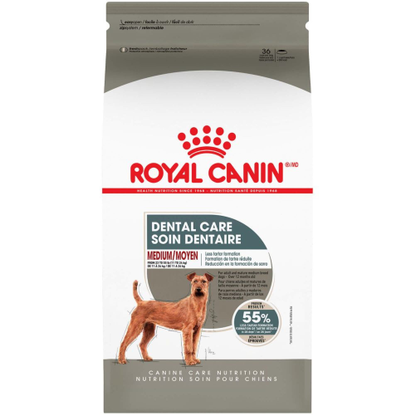
Regular Dental Checkups and Cleanings
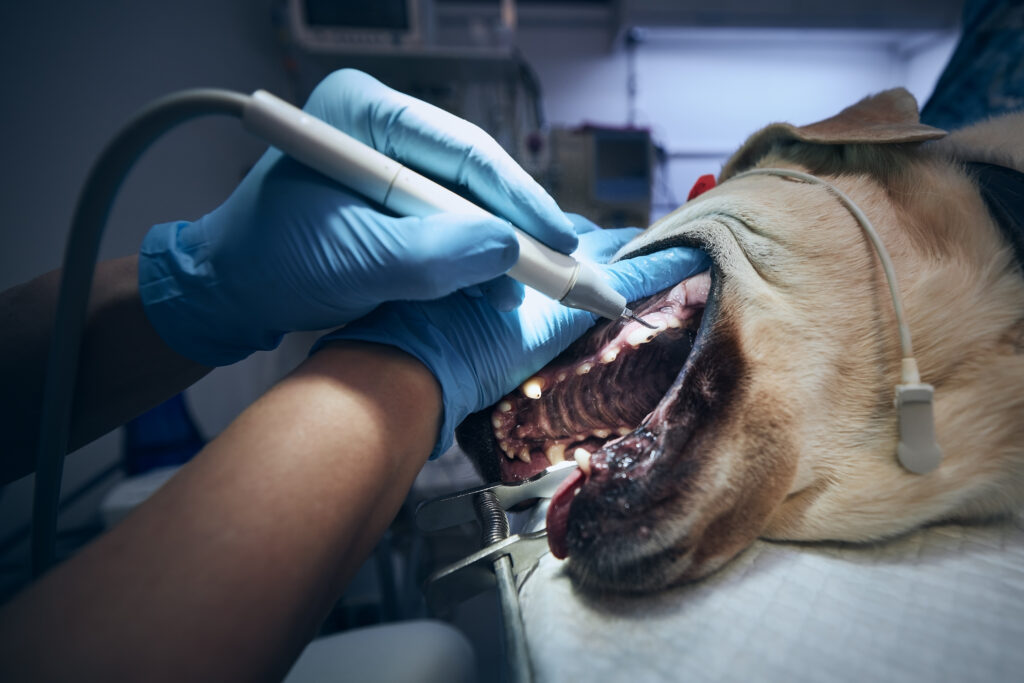
You can also avoid plaque and tartar buildup by taking your dog in for regular checkups and dental cleanings.
“Oral veterinary dentists would love it if every animal was having a full comprehensive oral health exam and treatment under anesthesia, once a year, starting at the age of 1,” Dr. Love says. “That’s actually the general recommendation.”
Dr. Love says she wouldn’t recommend “wake dentistry,” which refers to dental procedures performed while your dog is awake.
“The problem with that procedure is that your dog is really not getting a good clean and polish — it’s more of a cosmetic thing,” Dr. Love says. “I have seen animals that have had years and years of awake dentals and externally, their teeth look really good. And then when you get in there and you take X-rays, you realize that 50 percent of the teeth are actually so diseased, they need to be extracted.”
“Hopefully we can come up with a way to provide more affordable dentistry,” she adds. “I think that’s one of the biggest hindrances for parents right now — it’s the anesthetic component [that] makes the dentistry really expensive.”
Other Tips and Advice
In short, preventing severe plaque on a dog’s teeth is one of the most important things you can do to keep your pet healthy and happy. That means making dental care part of your pet’s routine — whether it’s brushing their teeth, using dental wipes or chew toys designed to reduce plaque, choosing dental-friendly diets, or scheduling regular professional cleanings.
Dr. Love says she understands that it might be hard for pet parents to get into a routine of caring for their dog’s teeth. In fact, she’s been there herself with her own dog.
“It’s just a really hard routine to get into, especially if you have kids and busy lives — it’s pretty easy not to do,” she says. “But that doesn’t mean you shouldn’t try!”
